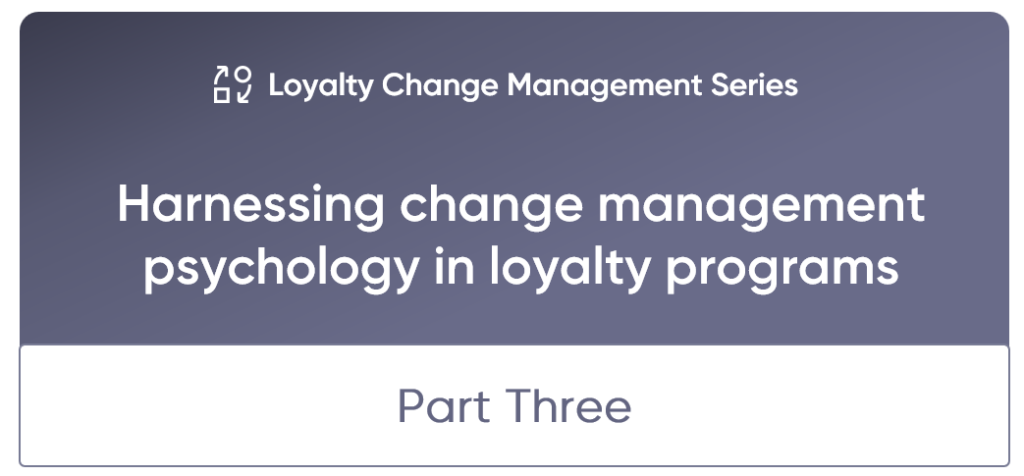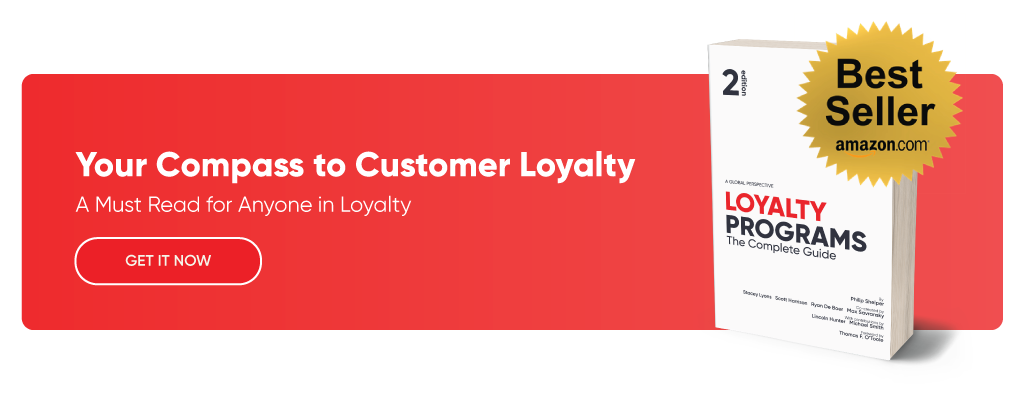
Change management psychology is essential when introducing loyalty programs, as it revolves around understanding and influencing human behaviours, emotions, and mindsets during organisational transitions. Loyalty programs require employees to adapt to new behaviours and mindsets, making it crucial to address psychological components such as breaking down resistance, building resilience, engaging employees positively, supporting emotional transitions, and creating meaningful purposes. Employing these principles effectively can lead to the successful implementation and acceptance of loyalty programs.
Breaking down resistance to change
Resistance to change is a natural psychological response due to various factors such as concerns about job security, workload, and uncertainty. Resistance can manifest as blind (all change is rejected), political (fear of losing value), or ideological (belief that change won’t work). Effective communication strategies, focusing on stakeholder involvement, are crucial in addressing these resistances. Research by Judson suggests involving stakeholders and providing them with opportunities to express concerns as a successful method to reduce resistance. Educating team members and removing biases, fears, and scepticism allow for smoother transitions.
It is common for internal debates to arise when implementing changes, as teams may disagree on priorities. The sponsor of the loyalty program must engage everyone in understanding the benefits, thereby reducing friction and fostering convergence. When employees believe that the change process is thorough and inclusive, they are more likely to accept the decision. Answering key questions for stakeholders such as “What does change look like to me?”, “Why is it happening?”, and “What will it look like when the change has been made?” helps in overcoming resistance.
Building resilience
Change often induces stress, impacting employees’ mental health and highlighting the need for support systems to build resilience. Initiatives such as training, counselling, and peer support are instrumental in helping employees manage stress and adapt to new roles or responsibilities. Encouraging a positive mindset toward change facilitates adaptation and resilience, ensuring that employees remain motivated and engaged throughout the transformation process.
Positive engagement and motivation
A successful loyalty program hinges on employee support, as they are crucial stakeholders in the change. Various factors, such as self-efficacy, self-determination, and perceived competence, affect employees’ readiness and motivation to embrace change. High self-efficacy correlates with successful implementation, while self-determination theory suggests that fulfilling employees’ psychological needs fosters positive responsiveness. Ensuring stakeholders are equipped with the necessary knowledge reinforces perceived competence and influences intrinsic motivation.
Perceived relatedness, or the sense of connection to the organisation, also enhances readiness for change. By promoting autonomy and creating a supportive environment, organisations can motivate employees to engage positively with the loyalty program. Effective knowledge management, through codification and personalisation strategies, further enhances readiness for change. Research highlights the importance of both formal and informal mechanisms in knowledge sharing to improve understanding and engagement.
Supporting emotional transition
Emotional intelligence (EI) plays a vital role in managing the emotional aspects of change. Leaders with high EI can better manage emotions, set a positive tone, enhance communication, and build stronger team dynamics. EI fosters a trusting and engaging culture, encouraging collaboration and resilience among employees. Daniel Goleman’s work emphasises that emotionally intelligent leaders are adept at navigating change because they can manage complex emotions and foster a supportive environment.
Creating meaning and purpose
Providing clear purpose and meaning behind changes helps employees see beyond disruptions and understand benefits. The “4 Ps” model—Purpose, Picture, Plan, and Part—developed by William Bridges, is an effective framework for communicating change. Clarifying the “why” (Purpose), painting a vivid future state (Picture), outlining a plan (Plan), and defining roles (Part) ensure employees are aligned with the organisational goals of the loyalty program and feel part of the transition.
McKinsey’s perspective on change management suggests that fostering understanding, motivating employees by connecting changes to core values, developing new skills, and reinforcing changes with encouragement are essential conditions for successful behavioural change. Clear communication about the reasons for change, aligning initiatives with organisational values, providing training, and consistent feedback help solidify new behaviours and prevent reverting to old habits.
Key takeaway
Implementing loyalty programs successfully requires addressing human side complexities through effective change management strategies. By focusing on psychological components, organisations can ensure a seamless transition, thereby fostering employee acceptance and engagement with the new loyalty program.
In the next blog we will go through navigating the role of leadership and communication in loyalty transformations.
Blogs in the series:
- Understanding loyalty in the context of change
- Mastering loyalty programs with change management theories
- Harnessing change management psychology in loyalty programs
- Navigating loyalty transformations: The role of leadership and communication
- The key steps to seamlessly integrate a loyalty program
- Adapting to change in the future: Why microchange strategies are the future of business evolution
Sources:
Huang, R.T. (2015), “Overcoming invisible obstacles in organizational learning”, Journal of Organizational Change Management, Vol. 28 No.3.
Burke, W. (2002). Organisation change: theory and practice, first edition, Sage Publications Inc.
Kotter, J. P. and Schlesinger, L. A. (1979) ‘Choosing Strategies for Change’, Harvard Business Review, 55(2), 4–11.
Hultman, K. (1979) The Path of Least Resistance, Learning Concepts, Austin, TX.
Bouckenooghe, D. (2010), “Positioning change recipients’ attitudes toward change in the organizational change literature”, The Journal of Applied Behavioral Science, Vol. 46 No. 4, pp. 500-531.
Judson, A. (1991). Changing behavior in organisations, Wiley-Blackwell
Goleman, D. (1995). Emotional Intelligence. Bantam Books.
Anand, N., & Barsoux, J. (2017). What Everyone Gets Wrong About Change Management, Leadership Development, Harvard Business Review. What Everyone Gets Wrong About Change Management (hbr.org)
Unlock the full potential of your brand with our expert loyalty consulting services
Whether you’re looking to enhance customer engagement, boost retention, or create a world-class loyalty program, our team is here to help. Contact us today to start your journey towards building your own loyalty program strategy.

